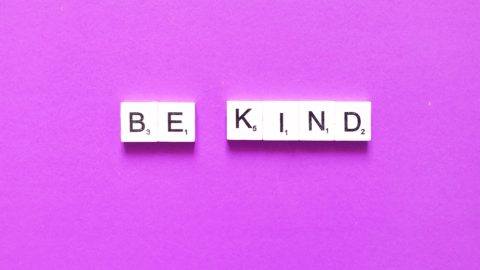I’ve always had a special place in my heart for high-energy students. I admire their enthusiasm and how they always seem to show up to class ready to bring it. Monday morning, rain or shine, while I’m waiting for my caffeine buzz to kick in from the Coke Zero I just guzzled, these kids come flying around the corner towards me with a big, toothy smile. I sometimes think to myself, “I’ll have what he’s having.”
High-energy students bring fun and laughter, participate often, and are typically game for any activity. However, that enormous amount of vitality may also be accompanied with impulsivity or a lack of self-control. These students may struggle with focusing and/or exhibit behaviors that are distracting (and even annoying) to others. This harms their classmates’ learning, their own learning, and in turn can lead to self-esteem issues.
So, what can we do? Well, for starters, we must permanently rid the sit still and be quiet expectation with our youngsters. We need strategies in place that will allow them to channel their energy for good, and it’s important to take a positive, proactive approach. The ultimate goal is to help teach our high-energy students how to self-regulate their own behavior. This won’t happen over night. I repeat, this won’t happen over night. However, with a little give and take, we can steadily build upon small successes to send these students in the right direction as they continue to mature.
Here are 20 tips for meeting the needs of high-energy students so that they can truly showcase their inner amazingness.
- Positive Discipline: I’m a firm believer in positive discipline and the Responsive Classroom approach. Let’s emphasize the good behaviors we observe to create safe, supportive learning environments that promote social, emotional, and academic growth.
- Brain Breaks: Embedding movement activities throughout the day is a MUST! Check out my post 30 Brain Break Clips: Fight the Fidgeting which links to a variety brain break videos for classroom use. GoNoodle.com is a great resource as well.
- Strategic Job Placement: Giving every single student a community helper job (see 50 Community Helper Jobs) will lighten your load and cultivate community. It just so happens that my high-energy students mayyy get a job that requires frequent movement (electrician) or one that increases responsibility while lessening potential hallway problems (line leader). Be purposeful with your selections!
- Selective Seating: Be mindful with seating arrangements. In the lunchroom, try placing high-energy students at a corner seat (less people/more space). On the carpet, let these students sit in the back row (where they can stretch out and sit on their knees).
- Visuals & Tactiles: Create multi-sensory activities to hold students’ attention. Additionally, use visuals and tactiles to communicate friendly reminders. For example, put a little sticky tab on the student’s desk to remind them to make better choices. Likewise, if a student struggles with blurting out, give them a little token to hold as a tactile reminder to raise their hand.
- Stimuli Control: Rid the extra supplies/materials that inevitably turn into toys instead of tools!
- Pick Battles: Understand that you can’t correct everything. It wouldn’t be fair anyway. Address the things that truly matter to the classroom environment.
- Take a Break: If a student is not exhibiting self-control (after being given a specific, friendly reminder of your expectation), simply ask the student to take a break or reset. This is NOT a time-out. Give the student the power to decide when they’re ready to return to the activity. Put them in charge of their choices. Also, doing so is far more powerful than slapping on a consequence that may occur hours later. Immediacy matters and is necessary for them to truly be able to make a connection.
- Self-Control Games: Play games like Freeze Dance or Teacher Says to help these students (and all students) practice impulse control.
- Model, Model, Model: We never want our class to sound like an “I Learned It By Watching You” 1980’s anti-drug ad. Practice what you preach!
- This or That: Hitting yourself in the face with your sleeve repeatedly, are we? Let’s try ____ or ____ instead. Redirect by providing the student two alternative choices.
- Buddy System: Enlist a peer to provide helpful reminders as needed. Allow the student with high energy to decide how they would prefer to be reminded (such as a verbal statement, a tap on the shoulder or desk, etc.)
- Signals/Cues: Together, create an agreed upon secret signal or cue that you will provide the student when improvements are needed.
- Proximity: Instead of reacting to a behavior, simply move closer to the student. Usually the behavior will improve without any words being exchanged.
- Good Choice Chart: Create an individualized behavior chart that clearly communicates desired behaviors. Let students track their own progress throughout the day and weigh-in on meaningful incentives. See 12 Do’s for Individualized Behavior Charts.
- Consistency with Specialists: Are you doing special things in the classroom to meet this student’s needs? Be sure specialists are aware. Consistency across the board is key!
- 1,2,3 Eyes on Me: When giving instructions, be sure the student is making eye contact with you.
- Never Rid Recess: Taking away play and exercise is counterproductive for these students who need it the most! If a consequence is necessary, try withholding another privilege instead.
- Keep Calm: As hard as it may be at times, keeping your cool is a must! High-energy students feed off of the surrounding vibes. Be a soothing presence.
- Engaging Instruction: Seems like a no-brainer, right? However, oftentimes high-energy students are off task simply because they’re bored. Let’s ensure our instruction is hands-on, minds-on, and meeting each child’s individual needs.
Like these ideas? Have any others to add? Please leave some love in the comments section below!









